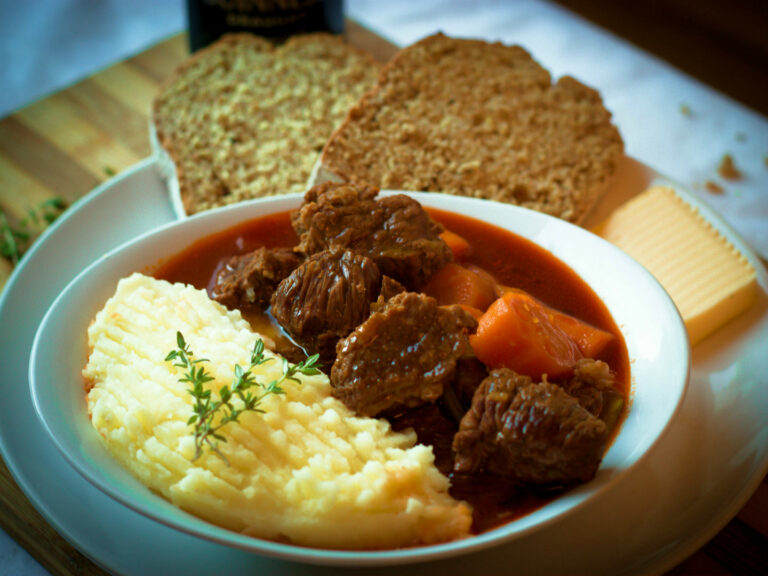Introduction: Visiting Ireland and Its Cuisine
Ireland is a destination that attracts millions of visitors every year, and one of the reasons is its delicious and hearty cuisine. Irish cuisine is known for its comfort food, such as hearty stews and pies, as well as its fresh seafood and dairy products. If you’re planning a trip to Ireland, make sure to check out some of the must-try dishes that will give you a taste of the country’s culture and traditions.
Irish Breakfast: A Hearty Start to Your Day
One of the staples of Irish cuisine is their hearty breakfast, which is a great way to start your day. The full Irish breakfast typically includes bacon, sausage, black pudding, white pudding, eggs, beans, tomatoes, and toast. Some variations may also include mushrooms, hash browns, and fried potatoes. The Irish breakfast is known for being filling and satisfying, and it’s a great way to fuel up before a long day of sightseeing.
Seafood Chowder: A Traditional Irish Soup
Seafood is a big part of Irish cuisine, and one of the best ways to enjoy it is through a traditional seafood chowder. This soup is typically made with a variety of seafood, such as salmon, mussels, and cod, as well as potatoes, onions, and cream. The chowder is then seasoned with herbs and spices, such as thyme and parsley, to give it a rich and savory flavor. This soup is a great way to warm up on a chilly day and experience the flavors of the sea.
Shepherd’s Pie: A Classic Irish Comfort Food
Shepherd’s pie is a classic Irish dish that is perfect for a comforting and filling meal. This dish is typically made with ground lamb or beef, mixed with vegetables such as carrots, peas, and onions, and topped with mashed potatoes. The pie is then baked in the oven until the potatoes are crispy on top and the filling is hot and bubbly. Shepherd’s pie is a great way to experience the hearty and comforting flavors of Irish cuisine.
Guinness Stew: A Delicious Beef Stew with a Kick
Guinness stew is a popular dish in Ireland that is made with beef, potatoes, carrots, and onions, as well as a generous amount of Guinness beer. The stew is cooked slowly over a low heat, which allows the flavors to meld together and the meat to become tender. The Guinness gives the stew a rich and deep flavor, and a kick of bitterness that balances out the sweetness of the vegetables. This stew is a must-try for anyone who loves a hearty and flavorful meal.
Soda Bread: A Crusty and Nutritious Side Dish
Soda bread is a staple of Irish cuisine and is a great side dish to accompany any meal. This bread is made without yeast and is instead leavened with baking soda, which gives it a distinctive flavor and texture. Soda bread is typically made with whole wheat flour, buttermilk, and salt, and it is a great source of fiber and nutrients. The bread is crusty on the outside and soft on the inside, and it pairs well with butter or jam. Soda bread is a great way to experience the rustic and wholesome flavors of Irish cuisine.










